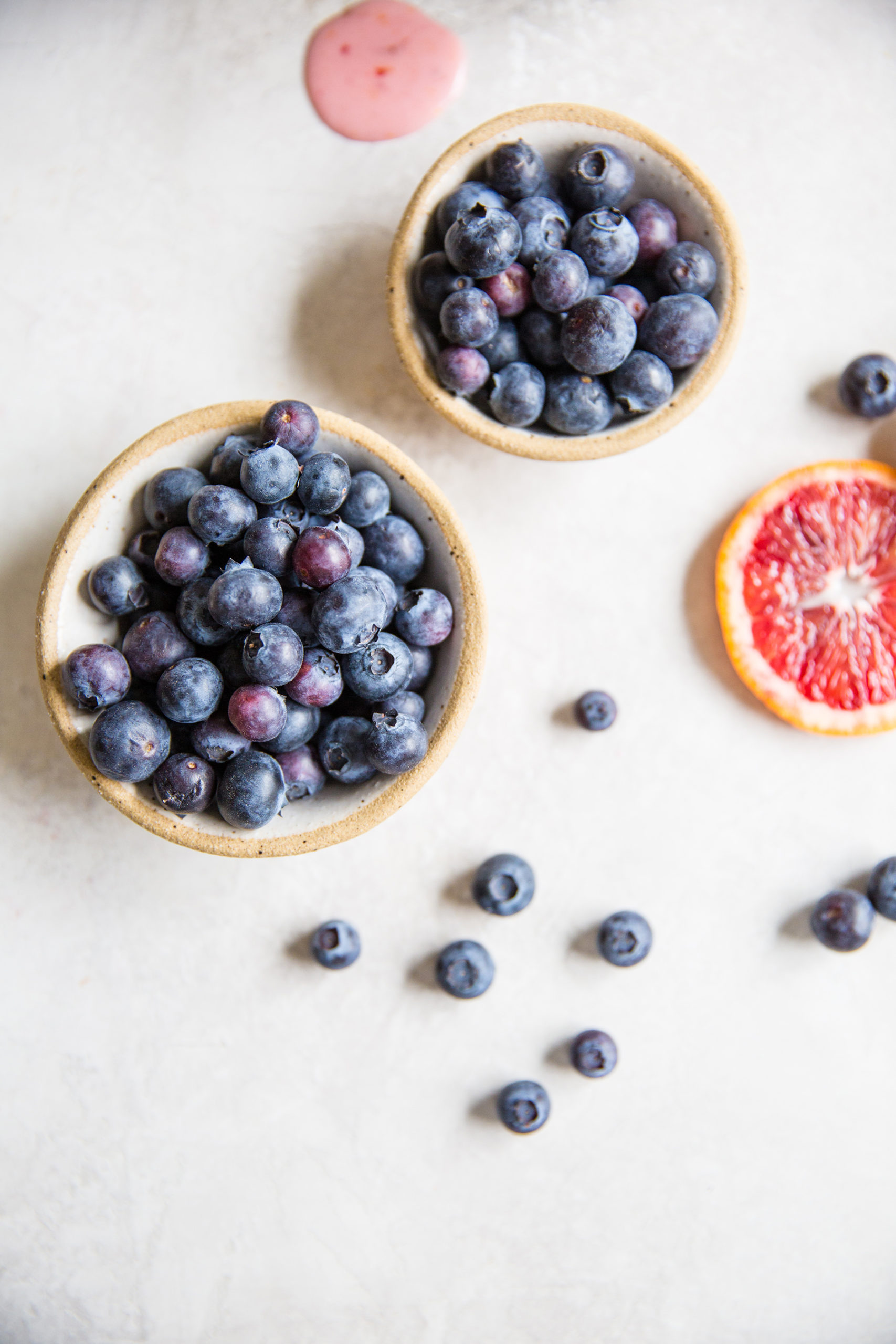
7 PRINCIPLES To Holistic Health for Women
Table of Contents
Welcome
1. Positivity in the Mental State
Stress Management
Have Some Restorative Sleep
2. Physically Healthy Society
Create Clarity in Your Environment
3. Optimal Nutrition
Tips for Successful Weight Manage Your Diet Plan Alkaline Foods List Gluten-Free Foods Your Supplements Recipes
4. Efficient Digestion / Absorption
Your Ticket to Holistic Health
5. Purification & Food Sensitivity Identification
The Ins and Outs Purification Guide Modified Elimination Diet
6. Hormonal Balance
Balanced Hormones/Balanced Body Your Hormonal Diary
7. Improved Structure & Function
Learn to Love being Physical!
Welcome
Welcome to "Holistic Health for Women" This ebook is
intended to present you with the fundamental concepts required for maximum health and well-being. Emotional/spiritual well-being, tailored good diet, healthy digestion, purification, hormonal balance, and optimal physical fitness are among these concepts. We want to help you achieve your own objectives and equip you to meet life’s challenges with success, calm, and strength.
Because every one of us is physically, emotionally, and spiritually distinct, this program will be personalized to your specific requirements. Throughout the training, you will encounter parts that are simple and others that are more difficult. When you run into difficulties or reach a plateau, your practitioner may need to assist with changes or diagnostic tools. hormonal testing, food sensitivity testing, heavy metal testing, nutritional evaluation for cellular function, and Candida testing are examples of such techniques. There are standardized laboratory and functional medical tests that may be used to evaluate dysbiosis, detoxification, and nutrigenomics (nutritional gene testing).
This “Holistic Weight Loss Program” guide is the result of many years of study and knowledge. My functional medicine skills will be available throughout this workbook. My staff and I will personally work with you to give you the tools you will need to help your patients achieve their healthcare objectives.
Wishing health, harmony, and prosperity to you.
Laxmi Naik, MD
Disclaimer: The author of this eBook has done her best to develop a comprehensive guide that is up-to-date and correct as of November 2022. The author makes no representations or warranties about the outcomes of anyone who use this guideline. Before implementing any of the recommendations, all patients should discuss this material with their healthcare practitioner. You will accept full responsibility for the advice if you share this material with your patients.
Laxmi Naik owns the rights to this eBook. Under no circumstances may any portion of this be reproduced, modified in any manner, sold, or used in any way other than as described in this eBook.
Stress Management
Making Everyday Life More Peaceful and Balanced
Stress is described as the physical, mental, or emotional response of the body to any change. Stress is caused by everyday demands and how one perceives, reacts to, and copes with such difficulties. The stresses of ordinary life are also referred to as stressors. Stressors can be classified in a variety of ways. There are also positive pressures, such as arranging a wedding or having a kid. Then there are the negative stresses, such as daily deadlines, interpersonal tensions, employment challenges, or health issues. There are two kinds of stressors: acute and chronic. These stresses differ in terms of duration and impact on the individual. Emotional pressures must not be overlooked! Many health disorders are caused by environmental or physical stresses.
When the body is stressed, it is actually being attacked. The adrenal glands work extra hard to compensate for the physiological impacts of stress. Without conscious awareness, the thyroid and the entire neuroendocrine system go into overdrive. This can result in a cascade of imbalance that can quickly spiral out of control. It is not always possible to pinpoint the particular source of stress. It might be the outcome of a single traumatic incident or a succession of chronic pressures that accumulate over time. Unresolved emotions can also cause the body to react.
Unresolved stress symptoms include:
● Anxiety
● Depression
● Anger
● Relationship dysfunction
● Problems with short-term memory
● Sleep deprivation
● Gaining weight
Have Some Restorative Sleep
Manage Stress
Stress can have long-term physiological impacts on the body. Symptoms may appear within days or weeks, or they may appear gradually over months or years. Stress is a major factor to:
Mental disorders
Mood disorders
Fibromyalgia
Heart disease
Autoimmune disorders
Gastrointestinal disorders
Hair loss
Sexual dysfunction
Weight gain
Cancer
Gaining Control of Your Life's Stressors
Taking control of the stresses in your life entails addressing several aspects of your health. Physical health, diet, and fitness, as well as personal connections, must all be evaluated.
To get control of the pressures in your life, you must take several key steps:
1.) Create a positive attitude. This means starting the day with positive intentions on a daily basis including being positive about oneself. Included in the workbook is a positive self-assessment questionnaire, take a minute out of each day to set forth some positive intentions.
2.) Surround yourself with people and relationships that contribute to your overall health and well-being in a positive, optimistic fashion. This means establishing clear boundaries in relationships and possibly eliminating the negative ones.
3.) Participate in activities that bring joy, rest and relaxation. It is important to create “me time”, this will help you relax and reduce stress. This could be reading a book or taking a bubble bath, or going on a date with your spouse. Maybe it means nurturing friendships, engaging in hobbies, or enjoying physical activities.
4.) Establish balance including financial and career needs. Set goals and establish the steps needed to reach these goals in your career and finances.
5.) Handwork such as knitting, needlepoint, crocheting, cross stitching, etc. can be valuable distresses and can be gifts that keep giving.
6.) Cultivate your spiritual life. Seek to connect with God or your higher power. Be mindful that everything is in competent and caring hands.
Get Sleep
Proper rest and sleep is essential to everyone’s health! The following guidelines will help in developing good sleeping habits.
Lifestyle Recommendations
1. Create a routine bedtime ritual to support an individualized sleep schedule.
2. A good sleep hygiene rule is to be in bed between 10:00 p.m.-11 :00 p.m. Regeneration and repair occurs during the deepest level of sleep (delta sleep). The prime time for this is approximately between 10:00 p.m. and 2:00 a.m.
3. Avoid smoking and alcohol consumption before sleep.
4. Use a quality pillow and mattress.
5. Get 8-9 hours of sleep per night.
6. Rule out hormone imbalance/deficiencies.
7. Keep the room temperature comfortable.
8. Remove devices emitting electromagnetic fields (EMF) from your sleep area. This may mean moving your alarm clock, radio and TV.
9. Do not watch Television or use your computer in bed.
10. Engage in regular aerobic exercise such as walking, swimming, yoga and tai chi, everyday.
11. Exercising late in the day can help sleep but others may find it too stimulating.
12. Avoid caffeine and stimulant-containing herbs before bed. Eating protein before bed can assist in restoring blood sugar conditions.
13. Manage stress and limit unnecessary, overextending obligations.
14. Check prescriptions and over-the-counter drugs for ingredients’ side effects. Many contain caffeine.
15. Rule out hypothyroidism, hypoglycemia, and weak adrenal function.
Dietary Recommendations
1. If having a bedtime snack, have it no later than one hour before bedtime.
2. Eat turkey or drink warm milk before bed. They contain tryptophan, an amino acid involved in the production of serotonin.
3. Take calcium and magnesium at bedtime. They have a relaxing effect on the body and aid sleep.
4. Consume quality protein at every meal to stabilize blood sugar levels.
5. Avoid sugar and sweetened products.
6. Avoid allergic or sensitive foods.
Supplement Recommendations
The following supplements are in addition to your daily multi vitamins to supply core vitamins, minerals, antioxidants and essential fatty acids can be used to assist with sleep. Check with your health care practitioner prior to using these supplements.
● Inositol: 500mg-1000mg before bed
● Melatonin: 1-3mg an hour before bed
● 5-HTP: 500mg-1000mg before bed
● L-theanine: 50-400 mg before bed
Healthy Physical Environment
CREATE CLARITY IN YOUR ENVIRONMENT
One’s physical environment has a greater effect on the body than you may realize. The surroundings in the home, work place, and recreation places have significant effects on the body, mind, and spirit.
Consider the following when evaluating the physical environment
ORGANIZATION & CLEANLINESS
Create a clutter free home and work environment. Clutter increases stress by making it difficult to find things by creating feelings of being overwhelming and crowded. Clutter can lead to distraction, inefficiency, and discouragement.
Find an individualized system that works and faithfully use it. Create a “To-Do List.” This avoids having unfinished tasks running through one’s mind. Use a “Personal Calendar” for appointments and time sensitive projects. Consistently use the individualized system to free the mind, thereby improving the completion of tasks, projects, and events. If the system is faithfully used, you will be more productive, focused, and more peaceful with life.
SAFETY
Do everything to keep work, living, and recreational spaces safe. Making and maintaining safety in the environment provides greater peace of mind.
A FEW PRACTICAL SAFETY ISSUES TO CONSIDER:
Make sure all smoke detectors and security alarms work.
Change the batteries every six months.
Ensure all electrical wires are structurally intact.
Store all toxic chemicals safely.
Child proof or elder proof the house, if necessary.
Take vehicles for routine maintenance.
Maintain the air conditioning and heating systems.
As far into the future as possible. Schedule minor repairs and routine maintenance. Certainly life will bring circumstances and events that are beyond ones control, but realizing there are things we can control and things that we cannot will also reduce worry.
ELECTROMAGNETIC FIELDS
Many of the modern conveniences that we rely on a daily basis to function
emit electromagnetic fields. An electromagnetic field is a physical field produced by electrically charged objects. It affects other charged objects in the vicinity of the field. A few examples of electromagnetic field emitting objects are:
● microwaves alarm clocks
● cell phones telephone wires
● computers fuse boxes
● televisions
The fields emitted by these objects can be harmful to the body. Some people may be sensitive to the fields emitted by an alarm clock and may find sleeping easier if they remove it from their bedroom. The fields emitted by cell phones have been linked to altering cell growth and function and should be stored as far away from the body as possible.
CHEMICALS
Use caution when applying insect spray and while using harsh chemicals for cleaning. Avoid inhaling these chemicals. Wear long pants and shirts. Avoid going outside for 30 minutes after trucks spray insecticide on the lawns. Avoid walking on a lawn right after an insect spraying or fertilization. These chemicals can alter our health at a cellular level as well.
GO GREEN!
Convert your household cleaning supplies to “green” choices. The benefits are reduced exposures of toxins to you and loved ones. Fewer toxins for the body to handle, and the environment. Use air and water filters. Surround the home and work space with life giving plants which act as natural oxygenators and air filters!
CALM SETTING
Seek to attain calm, serene settings wherever possible. Decorate with colors you find soothing. Arrange your personal environment in a way that creates a sense of peace and control. Reduce unnecessary noise and unhealthy clutter. By creating an environment that is calm and serene your health will greatly benefit.
List environmental stressors on one side and what you can do to control or balance them on the other:
Optimal Nutrition
Tips For Successful Fat Loss
LIFESTYLE RECOMMENDATIONS
Practice good sleep habits and get between 8-9 hours of sleep a night.
Avoid smoking and alcohol consumption.
Avoid stress and unnecessary obligations.
Engage in regular exercise, especially weight lifting to increase lean body mass. (Muscle burn calories as we sleep!)
Be mindful of your thoughts – positive thoughts can impact our food journey
DIETARY RECOMMENDATIONS
1. Eat an alkalinizing diet. Consume a diet that is 80% alkaline and 20% acidic. Alkaline foods decrease inflammation, improve immune response and assist with fat loss and detoxification. Consider adding a quality green drink to your program.
2. Drink half your body weight in ounces of water per day. This will aid the release of toxins from the kidneys and allow the liver to metabolize fat better.
3. Do not drink more than 4 ounces with meals. When foods are eaten digestive juices are being poured into the stomach. Drinking liquids dilutes these important enzymes. Stop drinking 20 minutes before a meal and do not begin drinking until two hours afterwards. Drink filtered water between meals.
4. Ideally, the biggest meal should be midday
5. Protein should be eaten at every meal including vegetarian proteins, eggs, fish, chicken and lean meat. This will stabilize blood sugar levels. It is ideal to eat between 2-3 hours between meal to keep blood sugar levels consistent. Do not skip meals!
6. Choose a low-glycemic diet. This includes replacing sugar with the xylitol or stevia. Learn to drink coffee and tea plain. Avoid soda drinks!
7. Eat brown foods and avoid white foods. Avoid white flour, white rice and all refined carbohydrates. This provides more fiber and aids in weight loss.
8. Get an Oil Change! Eat a balance of omega oils (flax and fish oils) and omega 9 oils (olive oil, olives, almonds, hazelnuts and avocados) while AVOIDING corn oil, safflower oil and soybean oil. Also, enjoy coconut, grape seed and sesame oils. AVOID margarine, hydrogenated vegetable oils and fried foods.
9. Carry Protein Bars to prevent missing meals.
10.Make sure you chew your food well, chew at least 32 times per bite!
11. Eat 5-9 servings of fresh fruits and vegetables daily OR may supplement with Standard Process Green Foods
THE GLYCEMIC INDEX & GLYCEMIC LOAD
The glycemic index is a rating system developed to measure a food’s effect on blood sugar levels. The higher the glycemic index, the more pronounced an effect a food will have on your blood sugar, and the more stress on your insulin system.
Carbohydrates (starches and sugars) have the greatest effect on your glycemic index. This is especially true if they have little fat or fiber content. Fat has a glycemic effect of zero. Taken with carbohydrates, fat actually blunts the glycemic index. So while a plain baked potato has a high glycemic index, a potato with butter would have a lower one.
Protein usually has a glycemic effect, but remember that because protein can be readily turned into blood sugar in the liver, it can raise insulin and blood sugar levels moderately, but usually in a healthy, even way. Low glycemic index carbohydrates are desirable for weight loss, diabetic control, and for keeping HDL cholesterol high. Recent research suggests that it is the high glycemic index carbohydrates that are the ones that lower HDL cholesterol which is a bad effect.
Generally, the lower the fiber content and the more refined a food is, the higher its glycemic index – e.g. white bread has a higher GI than whole grain bread unless the whole grain bread is finely ground, which breaks down its fiber.
Glycemic Index is categorized as follows:
Low GI: 55 or less
Medium GI: 56–69
High GI: 70 or higher
Examples of foods with respective glycemic indexes:
Glycemic Index
110 MALTOSE (Malt Sugar) ,100 GLUCOSE (Grape Sugar), 98 Potato, Russet, Baked
97 Parsnips, 92 Carrots , 87 Honey, 80 Potato, Instant Mashed, 80 Corn Flakes, 72 Whole Wheat Bread, 72 White Rice, 70 Potato, White, 69 White Bread, 68 Mars Bar, 67 Shredded Wheat, 66 Swiss Muesli,66 Brown Rice
64 Raisins
62 Bananas
59 SUCROSE
59 Sweet Corn
59 Pastry
51 Bran
51 Green Peas
51 Potato Chips
51 Sweet Potato
50 White Spaghetti
49 Oatmeal
45 Grapes
42 Whole Grain Rye Bread
42 Whole Wheat Spaghetti
40 Orange
39 Apples
38 Tomatoes
36 Ice Cream
36 Chickpeas
36 Lima Beans
36 Yogurt
34 Pears
34 Milk, Whole
32 Milk, Skim
29 Kidney Beans
29 Lentils
28 Sausages
26 Peaches
26 Grapefruit
25 Plums
THE GLYCEMIC INDEX & GLYCEMIC LOAD
The glycemic index is a rating system developed to measure a food’s effect on blood sugar levels. The higher the glycemic index, the more pronounced an effect a food will have on your blood sugar, and the more stress on your insulin system.
Carbohydrates (starches and sugars) have the greatest effect on your glycemic index. This is especially true if they have little fat or fiber content. Fat has a glycemic effect of zero. Taken with carbohydrates, fat actually blunts the glycemic index. So while a plain baked potato has a high glycemic index, a potato with butter would have a lower one.
Protein usually has a glycemic effect, but remember that because protein can be readily turned into blood sugar in the liver, it can raise insulin and blood sugar levels moderately, but usually in a healthy, even way. Low glycemic index carbohydrates are desirable for weight loss, diabetic control, and for keeping HDL cholesterol high. Recent research suggests that it is the high glycemic index carbohydrates that are the ones that lower HDL cholesterol which is a bad effect.
Generally, the lower the fiber content and the more refined a food is, the higher its glycemic index – e.g. white bread has a higher GI than whole grain bread unless the whole grain bread is finely ground, which breaks down its fiber.
Glycemic Index is categorized as follows:
Low GI: 55 or less
Medium GI: 56–69
High GI: 70 or higher
What does Gluten intolerance or sensitivity mean?
Gluten intolerance is not a food allergy. It is actually an autoimmune process that affects an alarming amount of the population. Remember, our genes have not changed in the past 5,000-10,000 years but our dietary habits have, especially over the past 50 years. This includes the introduction of genetically modified food. It is estimated that our current wheat crops contain 50% more gluten than its ancestors. This produces quite a good shelf stable product but our body is not designed to handle it. Additionally, breads and grains were not our ancestral diets. As a result of marketing and convenience, we must change how we think about eating in general and eat a cleaner whole foods diet.
Gluten intolerance
A person with gluten intolerance or sensitivity can simply not efficiently digest the protein portion of many commonly eaten grains. When this protein is ingested it combines with an enzyme called transglutaminase to form an immune complex that deposits on the lining of the intestines. The body recognizes this as a foreign substance. Immune cells come in and release toxins to try to “kill” this unidentified immune complex, and they cause inflammation and damage to the digestive and intestinal lining. Hence, the unexplained digestive symptoms like bloating, diarrhea, constipation, gas and cramping. The toxins are also responsible for causing feelings of fatigue and malaise after a meal containing these foods.
A healthy digestive and intestinal tract supports a strong immune system. Because the lining of the digestive tract contains immune cells that form a protective barrier called Secretory IgA, the depletion of immune cells makes a person very susceptible to infectious agents that they would normally be able to fight off. The inflammation also begins to damage the small intestine. This affects the person’s ability to absorb the vital nutrients they need.
While not everyone needs to be on a gluten free diet speaking to a medically trained provider in digestive health regarding the best option for you is ideal
Your Restorative Health & Fat Loss DIET PLAN
This diet/food plan is based on the suggested serving size amounts shown below:
WOMEN = 1200 Calories MEN = 1600 Calories
BREAKFAST
2 Oz. Protein
1 Starch
1 Fruit
1 Teaspoon Fat
(or use at another meal)
BREAKFAST
2 Oz. Protein
2 Starches
1 Fruit
1 Teaspoon Fat
(or use at another meal)
LUNCH
4 Oz. Protein
0 Starch
2 Cups of raw vegetables or
salad or 1 cup cooked
(may allow unlimited)
1 Teaspoon Fat
LUNCH
6 Oz. Protein
0 Starch
2 Cups of raw vegetables or
salad or 1 cup cooked
(may allow unlimited)
1 Teaspoon Fat
(or use at another meal)
DINNER
6 oz. Protein
2 Starches
2 Cups raw veggies/salad or 1
cup cooked
1 Teaspoon Fat
DINNER
4 Oz. Protein
1 Starch
2 Cups raw veggies/salad or 1
cup cooked
1 Teaspoon Fat
DINNER Menu Options
• 4 Oz. Broiled Red Snapper, 1 Cup Steamed Broccoli, 1 Baked Yam, 1 pat of butter
• 4 Oz. Stir Fried White Fish with 1 cup snow pea pods, onions, bean sprouts, red pepper, 1/2 cup brown rice
• 4 Oz. lean London broil, 1 small baked potato, 1 tsp sour cream, sautéed leeks or onions and mushrooms in wine
• 4 Oz. Wood-smoked or Broiled Salmon, 1!2 cup cooked brown rice vermicelli pasta (Pastariso brand), 1/2 cup tomato sauce with extra oregano, thyme and garlic; grilled vegetables
• 4 Oz. Chicken Breast with Rosemary, 1/2 cup Cous cous. roasted onions or garlic, broccoli sautéed in 1 tsp olive oil
• Salmon Burger Patties made with 4 oz. chopped salmon, onions, dill, 1 egg and 1/4 cup ground sesame seeds then sautéed in skillet with 1 tsp. butter 1 Cup cauliflower, 1/2 cup quinoa
• Albacore Tuna Broccoli Custard made with 1!2 lb. fresh chopped broccoli, 3 Oz. tuna, 1 egg, 3/4 cup 1 % milk, 1/4 cup grated cheese,
2 Tbsp. lemon juice, seasonings, 1/2 cup whole wheat macaroni mixed together and baked at 375°F for 35 minutes.
• 4 Oz. Albacore Tuna Pockets made with celery, red onion, sugar free unrefined mayonnaise, lemon juice, alfalfa sprouts, herb seasonings and 1 oz. sesame seeds stuffed into a whole wheat pita pocket.
• 4 Oz. Gourmet Salmon Salad made with 1 can salmon, 2 tsp. sliced scallions, 1 tsp. sliced radishes, 2 tsp. rice vinegar, 2 tsp. flax oil, 1 tsp. Soy sauce, and 1/4 tsp. minced ginger root all placed atop a green salad; 4 Wasa crackers
• 4 Oz. Swordfish made with juice of 1!2 lime, herb seasonings, and 1 tsp. softened butter patted onto all side of the fish. Broil. 1 small potato (cooked), 2 cups Brussels sprouts
Snacks
Raw vegetables
Celery with 1 tsp. cream cheese or nut butter
1 fruit
1 Oz. of cheese or meat
1 boiled egg
1/4 Cup nuts or seeds
1 Protein Bar (Standard Process Bar)
1 scoop Whey or Rice protein powder in any liquid
Beverages:
Green drinks like Standard Process Complete.
Herbal Teas: Cinnamon, Chamomile, Green Tea with cinnamon stick, Chai Tea
Sweeteners:
Agave
Stevia
Xylitol
QUICK & EASY:
Chef’s Salad
Egg Omelet
Leftover Chicken
Avoid:
Alcohol
Hydrogenated oils
Corn oil
Processed meats
Refined foods
Safflower oil
Alkaline Diet for GoodHealth80% Alkaline
Alkaline FRUITS apples/cider apricots avocados
bananas
berries cantaloupe
carob (pod only)
cherries
citron
currants
dates
figs (unsulphured)
grapes
grapefruit
kumquats
lemons
limes
loquats
mangos
nectarines
olives (ripe)
oranges
passion fruit
peaches
pears
persimmons pineapple (fresh)
pomegranates prunes
(small) melons (all)
raisins
sapotes
tamarind tangerines
tomatoes (fully ripened
or canned)
Alkaline VEGETABLES
alfalfa sprouts artichokes
asparagus
bamboo shoots
beans (green, lima, wax & stringed) beets
broccoli
cabbage
carrots
celery
cauliflower
Chard
chicory
collard greens
corn
cucumber
dill dock
dulse
eggplant
endive
garlic
horseradish Jerusalem
artichoke kale
kohlrabi
leeks
lettuce
maca
mushrooms
okra
oyster plant
Parsley
radish
romaine lettuce
rutabagas sauerkraut soybeans
spinach
sprouts
squash
sweet potato turnips (and greens) watercress
Yams
Alkaline DAIRY
acidophilus milk & buttermilk
milk (raw only – human cow, goat)
whey
Alkaline FLESH FOOD
beef juice
blood & bone
(only bone meal)
Alkaline NUTS
al-monds (roasted)
coconut (fresh)
Alkaline GRAINS
buckwheat
Millet
Acid FRUITS
all canned with sugar
cranberries dried-sulfured,
glazed olives (pickled)
plums
prunes (large)
Acid FLESH FOODS
all meats
fowl
fish
shellfish
Jell-o gelatin
Acid VEGETABLES
asparagus tips (white only)
beans (dried)
Brussels sprouts
garbanzos
lentils
peas (dried)
rhubarb
Acid NUTS
all others coconut
(dried)
Acid MISCELLANEOUS alcohol
(occasional wine is ok)
animal fats
cocoa
coffee
egg whites
Indian teas
mayonnaise
tapioca
vegetable oils
vinegar
Acid DAIRY
butter
cheese (all)
cottage cheese
cream
custards
margarine
milk (boiled, cooked, malted, dried, canned)
Testing for Gluten Sensitivity
Blood testing can also be done to look at an array of food and chemical sensitivities by looking for specific immune IGG-IGE responses. Ask your doctor about this testing as it is different from skin testing.
Hidden Glutens
Read food labels carefully! Be wary of modified food starch, dextrin, flavorings and extracts, hydrolyzed vegetable protein, imitation seafood, and creamed or thickened products such as soups, stews, and sauces. Even the smallest amount could be enough to keep you from feeling the best that you can, so you will want to take extra care in finding those places that it might be hidden.
NOT OK / Intolerable
Beer
Bulgar
Couscous
Durum
Kamut
Oats
Rye
Semolina
Soy
Spelt
Teff
Tritica
Wheat
OK / Tolerable
Arrowroot
Amaranth
Barley
Malt Bean Flours
Buckwheat
Corn
Millet
Potato Based
Vodka
Tequila & Wine
Quinoa
Rice
Wild Rice
Taro
Tapioca
Vinegars
(Apple Cider, Balsamic & Rice]
Wheat Gross, Barley Grass
You are what you eat!
There are many facets to healthy living. Nutrition, Sleep, Stress management, exercise, hormonal balance. Each person has a individual biochemistry and its learning how to balance all factors medical, psychological and spiritual that leads to a comprehensive approach to health.
Laxmi Naik, MD
www.spectrumihealth.com
[email protected]
Tel: (678) 713-3645
SUBSCRIBE TO GET FREE EBOOK






